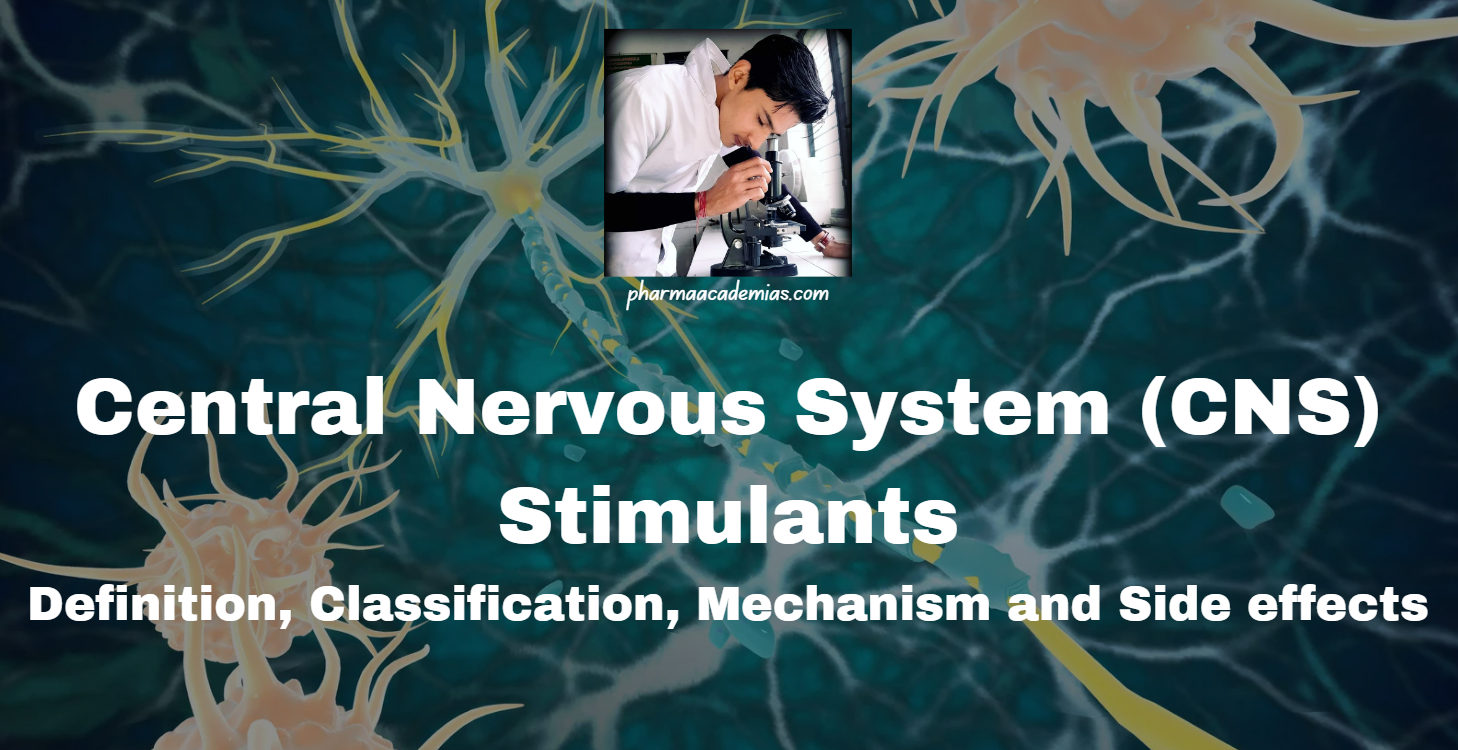Definition
CNS stimulants are a class of drugs that enhance the activity of the brain and spinal cord, leading to increased alertness, energy, and attention. They can affect various neurotransmitters and are used therapeutically for conditions such as attention deficit hyperactivity disorder (ADHD), narcolepsy, and certain cases of depression.
Classification of Central Nervous System (CNS) Stimulants
1. Amphetamines
Amphetamines are synthetic stimulants that increase the levels of certain neurotransmitters in the brain, particularly dopamine and norepinephrine, which play key roles in mood, attention, and arousal. These drugs are commonly prescribed for ADHD and narcolepsy but also have a high potential for abuse and addiction.
– Examples: Amphetamine (Adderall), methamphetamine (Desoxyn), dextroamphetamine (Dexedrine).
2. Methylphenidate
Methylphenidate is a central nervous system stimulant primarily used to treat ADHD and narcolepsy. It works by blocking the reuptake of norepinephrine and dopamine into presynaptic neurons, increasing their levels in the brain and thereby improving attention and focus while reducing impulsivity and hyperactivity.
– Examples: Ritalin, Concerta, Metadate.
3. Xanthines
Xanthines are a group of naturally occurring compounds that act as mild stimulants by inhibiting phosphodiesterase enzymes and blocking adenosine receptors in the brain. This results in increased neuronal activity and alertness. Xanthines are found in various foods and beverages and are commonly used to combat fatigue and drowsiness.
– Examples: Caffeine (found in coffee and tea), theobromine (found in chocolate), theophylline (used in respiratory therapies).
4. Cocaine
Cocaine is a powerful natural stimulant derived from the leaves of the coca plant. It is primarily used recreationally due to its potent euphoric effects but is also used medically as a local anesthetic. Cocaine increases the levels of dopamine, norepinephrine, and serotonin in the brain by blocking their reuptake, leading to intense but short-lived stimulation and euphoria.
– Examples: Cocaine hydrochloride (medically used form), crack cocaine (freebase form).
5. Modafinil
Modafinil is a wakefulness-promoting agent primarily used to treat sleep disorders such as narcolepsy, obstructive sleep apnea, and shift work sleep disorder. It is believed to work by increasing the release of dopamine and inhibiting its reuptake, although its exact mechanism of action is not fully understood. Modafinil is known for its lower potential for abuse compared to other stimulants.
– Examples: Modafinil (Provigil), armodafinil (Nuvigil).
6. Others
This category includes various other stimulants that do not fit into the aforementioned classes but still have significant effects on the central nervous system. These drugs have diverse mechanisms of action and are used for a variety of therapeutic and recreational purposes.
– Examples:
– Nicotine: Found in tobacco, nicotine acts on nicotinic acetylcholine receptors in the brain, leading to increased alertness, relaxation, and a sense of pleasure. It is highly addictive and is the primary reason for tobacco dependence.
– Ephedrine: A naturally occurring stimulant found in certain plants, ephedrine is used in some over-the-counter medications for nasal congestion and weight loss. It works by stimulating the release of norepinephrine and, to a lesser extent, dopamine.
– Pseudoephedrine: Similar to ephedrine, it is used as a decongestant in cold medications.
– MDMA (Ecstasy): A synthetic drug that has both stimulant and hallucinogenic properties, affecting serotonin, dopamine, and norepinephrine levels to produce euphoria and emotional closeness.
Mechanism of Action of Central Nervous System (CNS) Stimulants
1. Amphetamines
– Increase the release of norepinephrine and dopamine from nerve endings.
– Inhibit the reuptake of these neurotransmitters, enhancing their effects.
– Can also stimulate the release of serotonin.
2. Methylphenidate
– Blocks the reuptake of norepinephrine and dopamine into presynaptic neurons.
– Increases the levels of these neurotransmitters in the synaptic cleft.
3. Xanthines
– Inhibit phosphodiesterase, leading to an increase in cyclic AMP.
– Antagonize adenosine receptors, reducing adenosine’s inhibitory effects on the CNS.
4. Cocaine
– Blocks the reuptake of dopamine, norepinephrine, and serotonin.
– Increases their concentrations in the synaptic cleft, leading to prolonged stimulation of postsynaptic neurons.
5. Modafinil
– Exact mechanism not fully understood.
– Believed to increase dopamine release and inhibit dopamine reuptake.
Pharmacological Action of Central Nervous System (CNS) Stimulants
1. Enhanced Alertness and Wakefulness
– Increased mental alertness and reduced fatigue.
– Enhanced cognitive performance.
2. Increased Heart Rate and Blood Pressure
– Sympathomimetic effects due to increased norepinephrine levels.
– Can lead to increased heart rate and elevated blood pressure.
3. Appetite Suppression
– Reduced appetite often observed, particularly with amphetamines and methylphenidate.
4. Mood Elevation
– Enhanced mood and euphoria due to increased levels of dopamine and serotonin.
Uses of Central Nervous System (CNS) Stimulants
1. ADHD (Attention Deficit Hyperactivity Disorder)
– Amphetamines (e.g., Adderall) and methylphenidate (e.g., Ritalin) are commonly used.
– Help improve focus, attention, and control impulsive behaviors.
2. Narcolepsy
– Modafinil and amphetamines are used to manage excessive daytime sleepiness.
3. Obesity
– Certain stimulants (e.g., phentermine) are used as appetite suppressants to aid weight loss.
4. Depression
– Occasionally used as adjunct therapy in treatment-resistant depression.
5. Fatigue and Sleep Disorders
– Used to promote wakefulness in patients with chronic fatigue and sleep disorders.
Side Effects of Central Nervous System (CNS) Stimulants
1. Cardiovascular
– Increased heart rate, hypertension, palpitations.
– Risk of arrhythmias and cardiovascular complications.
2. Central Nervous System
– Anxiety, agitation, restlessness.
– Insomnia, tremors, headache.
– Risk of addiction and dependence, particularly with cocaine and amphetamines.
3. Gastrointestinal
– Reduced appetite, nausea, stomach pain.
– Weight loss.
4. Psychiatric
– Mood swings, aggression, paranoia.
– Psychotic episodes with high doses or prolonged use.
5. Other
– Hyperthermia, diaphoresis (sweating).
– Risk of tolerance and withdrawal symptoms.
Conclusion
CNS stimulants are potent agents used to treat various disorders involving impaired alertness and cognitive function. While effective, their use is often accompanied by a range of side effects and potential for abuse, necessitating careful medical supervision. Understanding their mechanisms, pharmacological actions, and potential adverse effects is crucial for optimizing their therapeutic benefits while minimizing risks.

